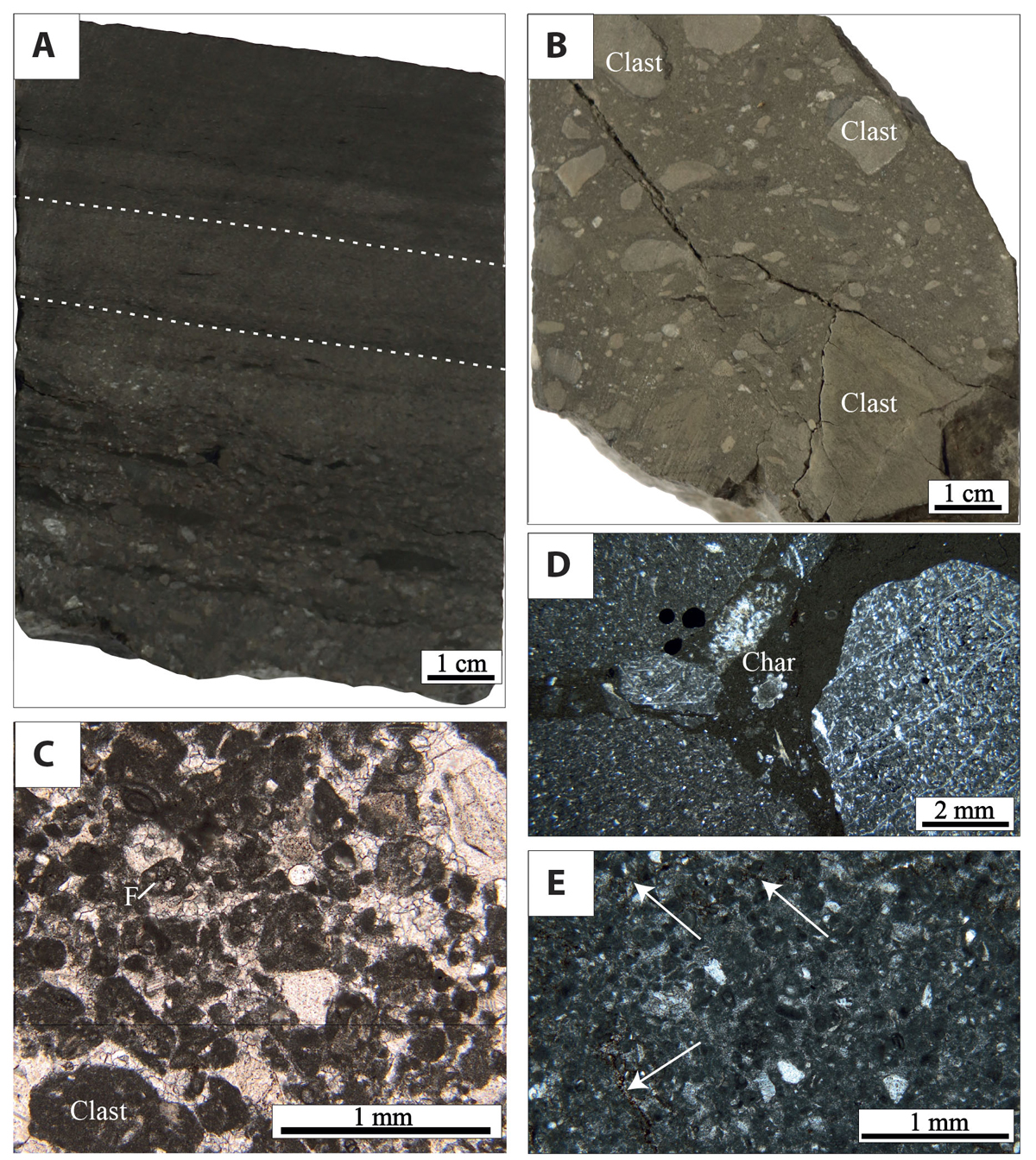Fig. 7

Download original image
(A) Core photograph showing the coarse calcarenite (F5 facies). Note that the base of the sample contains coarse grains while the grain size becomes finer at the top, the dashed lines indicate parallel lamination. (B) Core photograph showing a matrix-supported conglomerate with a particularly monomictic composition of the angular clasts (Clast). (C) Thin section of a sandy matrix showing the wide variety of reworked elements: foraminifera (F) and carbonate lithoclasts (Clast) (PPL). (D) Thin section under plane polarized light showing the nature of the clasts and the matrix. For instance, the clast on the right-hand side of the picture contains a marine limestone made of abundant sponge spicules. The marlstone matrix may contain lacustrine elements produced in situ like characean remains (Char). (E) Microphotograph under plane polarized light of a bedded quartzose calcarenite (F7 facies) from the upper interval of the “Série Calcaire” Formation. The detrital elements are similar to those from the previously defined calcarenites and microconglomerates. These calcarenites (F7 facies) are characterized by the presence of pedogenic features such as perigranular cracks (white arrows).
Current usage metrics show cumulative count of Article Views (full-text article views including HTML views, PDF and ePub downloads, according to the available data) and Abstracts Views on Vision4Press platform.
Data correspond to usage on the plateform after 2015. The current usage metrics is available 48-96 hours after online publication and is updated daily on week days.
Initial download of the metrics may take a while.




